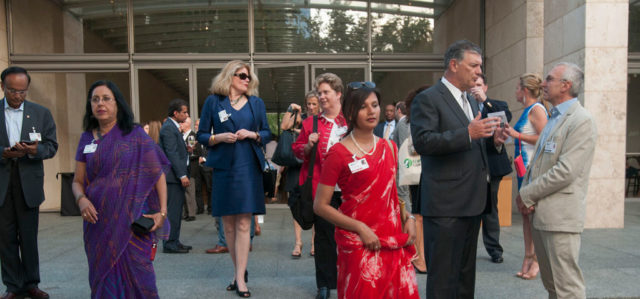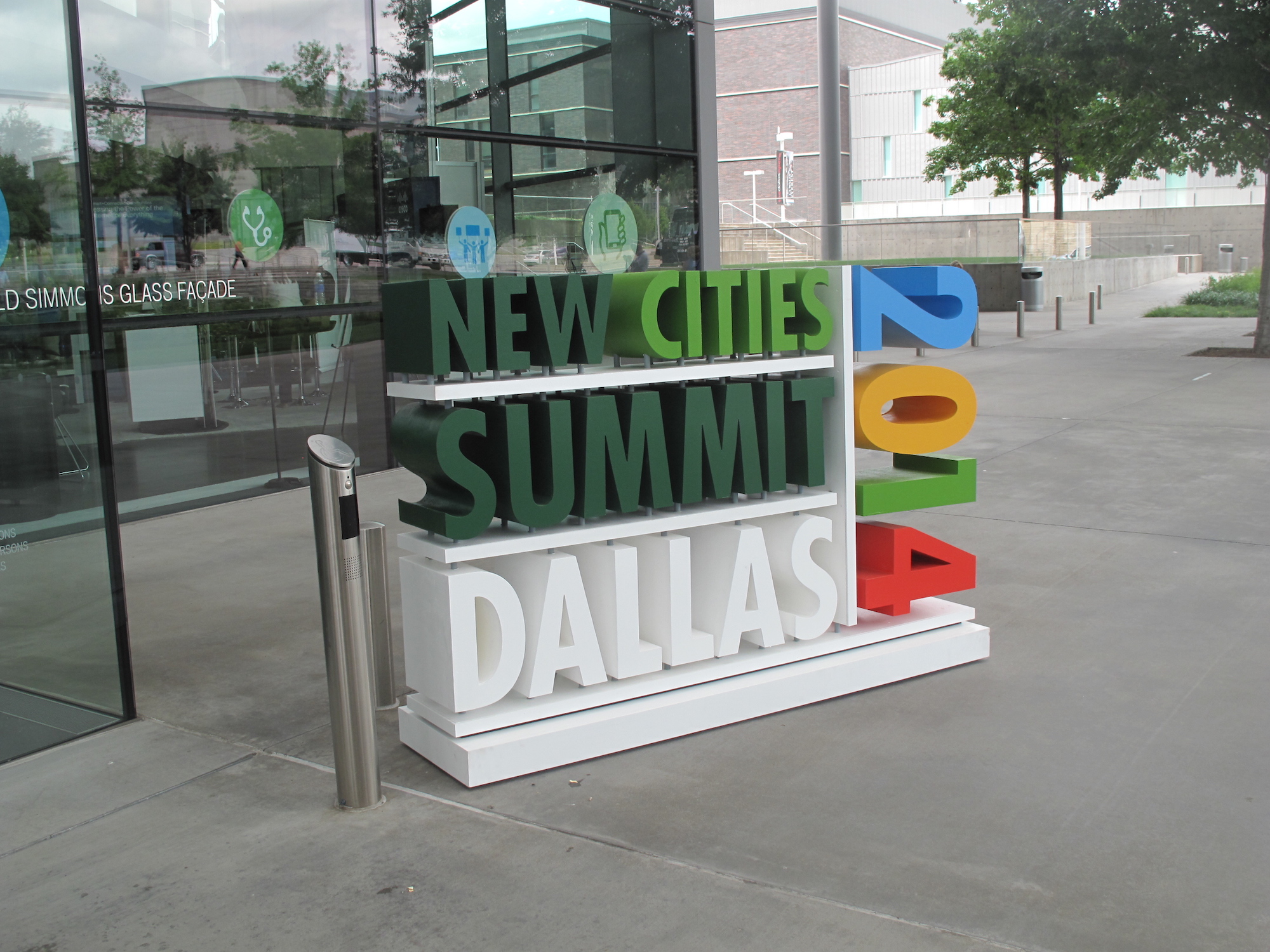
NewCities Summit Arrives to Dallas
June 18, 2014 — Blog
Welcome to Big D, NewCities!
Dallas rolled out what has become its signature, wide-armed welcome for the opening day of the NewCities Summit – the NewCities’ third gathering following last year’s wonderful experience in São Paulo, and two years after its debut in Paris.
This year, for its first foray in the United States, the Summit gathered hundreds of international guests and panelists to one of Dallas’ cultural crown jewels, the AT&T Performing Arts Center (at the Winspear Opera House) whose Norman Foster-designed building was positively crackling with activity and anticipation at the day’s full lineup of keynote speakers and provocative panel discussions.
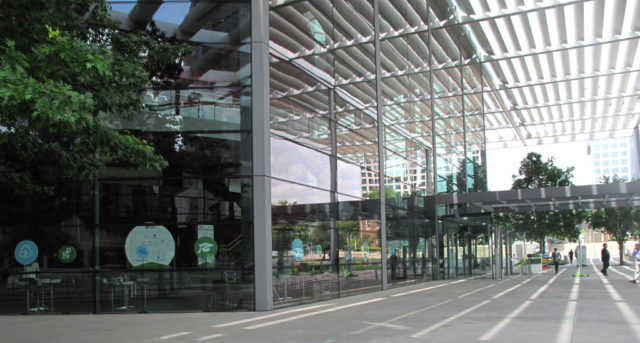
Set on the main stage of the Opera House, with its gilt-fronted balconies, and employing a visually arresting backdrop of kinetic video images, along with a three-dimensional, multi-colored presentation of the conference’s theme – “re-imagining cities” – the summit kicked off with elegant and evocative opening remarks by NewCities Founder and Chairman, John Rossant.
Rossant was unambiguous in emphasizing the summit’s “common purpose and common dedication to re-imagining our cities, to make them into better places to live and work. The future of our children and our grandchildren is inescapably an urban future. We must get cities right.”
And as if Rossant had thrown down an inspirational gauntlet, a procession of speakers and panelists went on to present a dizzying array of approaches to how cities – from Dallas to Delhi – can and should get it “right.”
The Mayor of Dallas, Mike Rawlings, introduced as someone with aptly Texan-sized ambitions for Dallas, led with some levity by saying that he had instructed all his native Dallasites to smile and be “very friendly and hospitable” to the various NewCities Summiteers – many representing 51 different countries – and that, in turn, he was hoping all the guests would “spend lots of money in Dallas.”
On a more serious note, Rawlings presented a concise yet comprehensive time-trotting history of Dallas before arriving to the present day and the ultimate challenges in re-imagining the city – with that being manifest in its recent expansion of its cultural arts district, along with adding more park spaces, and bike-friendly roads. “We can’t reimagine our cities by simply reacting, or by coming up with cool ideas after a bottle of wine,” said Rawlings. “We must be more strategic.”
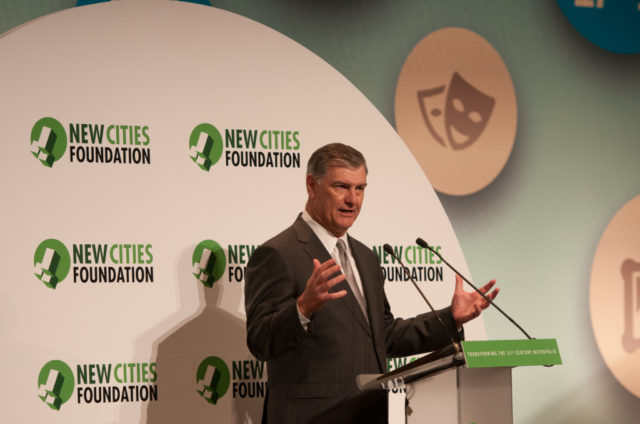
Parag Khanna, Managing Partner of Hybrid Reality, made sure the assembled audience understood the import of the NewCities Summit by throwing out a staggering set of statistics, among them that 50 percent of the world’s population is firmly urban – and that these cities aren’t really dots on the map but more like patches or clusters, really city-states spreading inexorably outward.
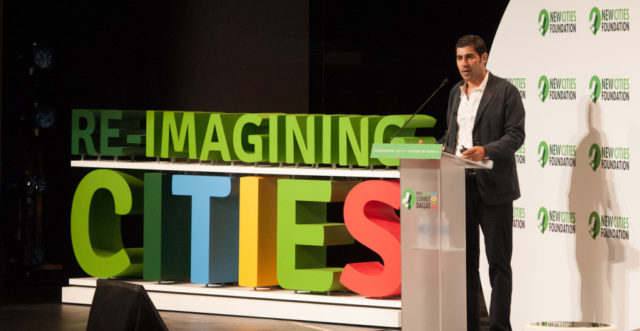
Summit panelist Jaime Lerner, a former governor from Parana, Brazil, then picked up where Khanna left off, by exhorting the Dallas audience to understand the big difference between “needs and dreams for a city and that a city has no future if it lacks dreams…And most every city can be improved, many in less than three years…And, ultimately, we need more eco-architects rather than ego architects.”
A city has no future if it lacks dreams – said Jaime Lerner
Perhaps the most impishly entertaining, yet provocative, talk of the day was given by Geoffrey West, Professor and Past President of the Santa Fe Institute. West flatly declared that fairly soon, all cities will be essentially interconnected and “there will be no such thing as a single autonomous city. What happens in one will affect everything else. Essentially, the economic fate of the planet equals the fate of our cities.”
But on a decidedly humanist note, it was appropriate that West would refer several times to a Shakespearean quote: “What is the city but the people.” But, as if he simply couldn’t resist a more contemporary touch, West had the audience ponder the sight of Godzilla marauding through a city. Somehow, Shakespeare and Godzilla and the future or urban life seemed to work well together.
There will be no such thing as a single autonomous city – declared Geoffrey West
The day also offered a fascinating insight into the sharing economy and its relationship with cities, with a panel comprised of representatives from Airbnb, IBM and Collaborative Lab, and moderated by Chris Michael of Guardian Cities. NewCities also launched Online & Underground, a visually striking info-graphic exploring Internet connectivity in the world’s underground metro systems, and questioning the implications that varying levels of connectivity could have on urban society.
In between sessions, the NewCities Summit offered refreshing “networking breaks” for participants. And much networking was clearly to be had as summiteers gathered around their laptops at high-top tables, while others chatted over cups of coffee, or snacked on a cookie or ripe apple. Still others gathered at the huge Ericsson and Cisco sponsorship kiosks, while others relaxed to the music of a string quartet from the Dallas Symphony Orchestra, and jazz from the St. Paul United Methodist Jazz group.
The networking break was ideal preparation for the rapid-fire WhatWorks panel that featured six inspiring, and stunningly young, urban innovators, whose projects were equal parts creative and courageous. David Auerbach unflinchingly attacks the evils of carelessly handled human waste disposal in Kenya. Meanwhile, Mohamed Hage’s Lufa Farms wants to bring totally organic, pesticide-free rooftop farming to every urban area he can find. And Pronita Saxena’s NextDrop is already making sure as many Indians have much easier access to predictable, and clean, water.
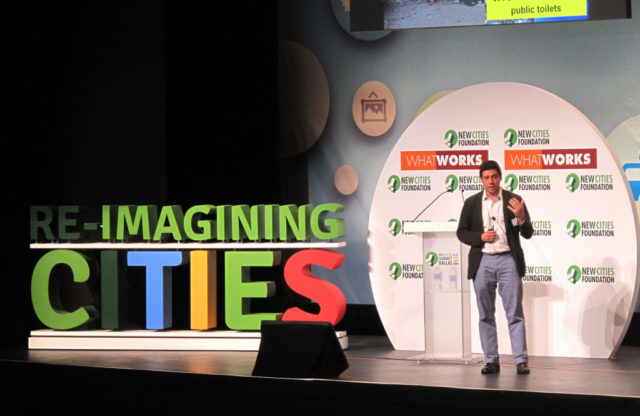
The NewCities Summit US debut culminated with an important discussion of the role of art and culture in our understanding and perception of cities. This began with a bold presentation by Chinese artist Huang Rui, who provided a vital perspective of the link between city and art.
Huang Rui then joined a panel led by Maxwell Anderson, Director of the Dallas Museum of Art and member of the board of the Global Cultural Districts Network, the discussion treated the ultimate role played by a city’s major arts institutions, especially when it comes to nurturing other smaller organizations.
“The big institutions are definitely the city’s mansion on the hill,” said Rip Rapson, President and CEO of The Kresge Foundation,“ But it shouldn’t make us forget about the other institutions – the gardens, greenhouses, and the wilds producing the individual artists – all of which contribute greatly to a city’s cultural scene.”
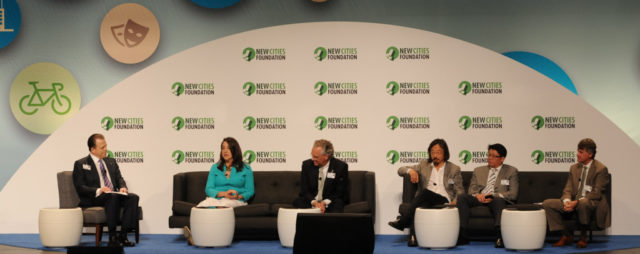
“I really like that metaphor,” chimed in Catherine Cuellar, Executive Director of the Dallas Arts District, “As I believe it is important that the city – and I think Dallas does this – play a role in moving that artist from the obscure wilds through the garden, the greenhouse, and, perhaps, all the way to the artistic mansion on the hill.”
The day came to a close with a reception in the gardens of the elegant Renzo Piano-designed Nasher Sculpture Center. It was a chance for those new to Dallas to witness one of the many world-class art collections that the city is home to. Participants from Africa, Asia, the Americas and Europe – mayors, scientists, artists, technologists and planners – mingled together among the sculptures, reflecting upon the day’s complex and inspiring discussions and continuing to debate key concepts and challenges. It was a fitting end to a day devoted to mapping out a more collaborative, creative and connected urban future.
